Gardening in Maryland: A Comprehensive Guide
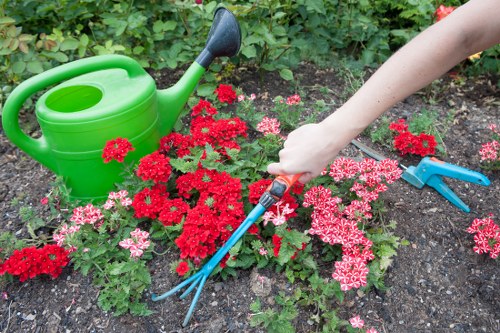
Gardening in Maryland offers a unique blend of challenges and rewards. With its diverse climate zones, Maryland provides opportunities for gardeners to cultivate a wide variety of plants. Whether you're a seasoned gardener or a beginner, understanding the local conditions is key to creating a thriving garden.
The state’s rich history in agriculture has paved the way for numerous gardening resources and communities. Maryland gardeners can take advantage of the extensive knowledge shared by local horticulturists and gardening clubs. This collaborative spirit helps promote sustainable and innovative gardening practices throughout the region.
One of the first steps in successful Maryland gardening is selecting the right location. Factors such as sunlight exposure, soil quality, and drainage play critical roles in determining the health and productivity of your garden. By carefully assessing these elements, you can create an optimal environment for your plants to flourish.
Understanding Maryland’s Climate and Soil
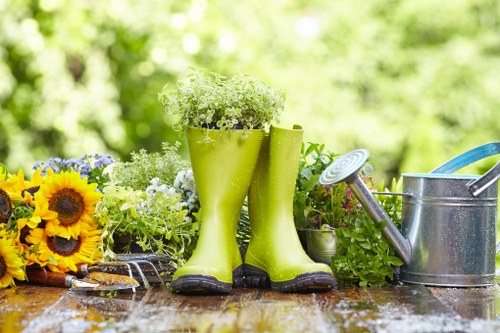
Maryland experiences a humid subtropical climate in the southern regions and a humid continental climate in the northern areas. This variation affects planting schedules and the types of plants that can thrive in different parts of the state. Gardeners must consider the local climate when planning their gardens to ensure that plants are well-suited to the weather patterns.
The soil in Maryland is equally diverse, ranging from sandy soils near the coast to clay-rich soils inland. Conducting a soil test can help determine the pH level and nutrient content of your garden soil. Based on the results, you can amend the soil to better support the growth of your desired plants.
Proper soil preparation involves adding organic matter such as compost or manure, which improves soil structure and fertility. This practice not only enhances plant growth but also promotes beneficial microorganisms that contribute to a healthy garden ecosystem.
Choosing the Right Plants for Your Maryland Garden
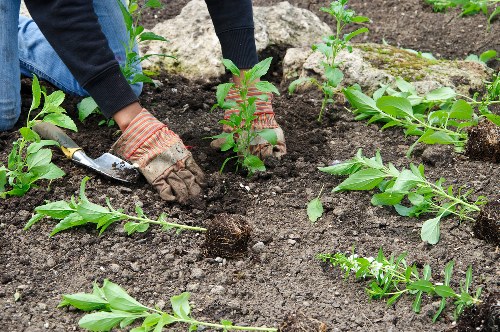
Selecting plants that are well-suited to Maryland’s climate and soil conditions is crucial for a successful garden. Native plants are an excellent choice as they are adapted to the local environment and require less maintenance. Examples of native Maryland plants include Black-eyed Susans, Virginia Bluebells, and Eastern Redbuds.
In addition to native species, many ornamental and vegetable plants thrive in Maryland gardens. Popular choices include tomatoes, peppers, sunflowers, and roses. When choosing plants, consider their growth habits, light requirements, and water needs to ensure they complement each other and the overall garden design.
Seasonal planting is another important consideration. Maryland has distinct seasons, and selecting plants that bloom or produce during different times of the year can provide continuous interest and productivity in your garden.
Gardening Tips for Maryland Gardeners
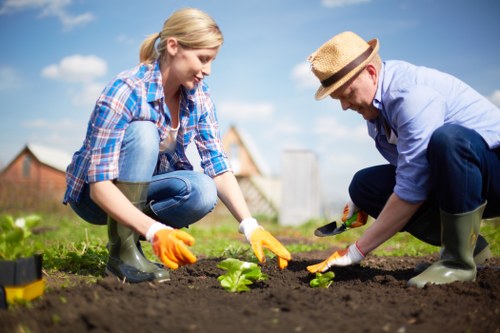
Implementing effective gardening practices can significantly enhance the success of your Maryland garden. One essential tip is to practice crop rotation if you are growing vegetables. This technique helps prevent soil depletion and reduces the risk of pests and diseases by varying the types of plants grown in a specific area each season.
Mulching is another beneficial practice. Applying a layer of mulch around your plants helps retain soil moisture, suppress weeds, and regulate soil temperature. Organic mulches, such as shredded leaves or bark, also enrich the soil as they decompose.
Regular watering is crucial, especially during the hot summer months. Installing a drip irrigation system can provide consistent moisture directly to the plant roots while minimizing water waste. It's important to water early in the morning to reduce evaporation and prevent fungal diseases.
Sustainable Gardening Practices in Maryland
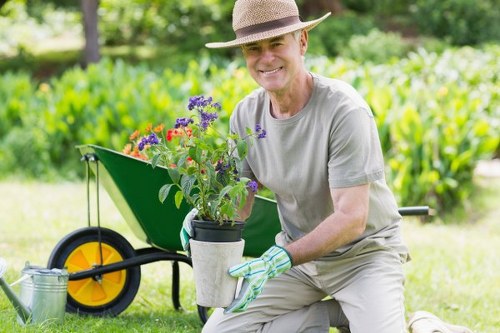
Sustainability is increasingly important in gardening, and Maryland gardeners can adopt several practices to make their gardens more eco-friendly. Composting kitchen scraps and yard waste not only reduces landfill contributions but also creates a nutrient-rich amendment for your soil.
Using native plants and creating habitats for local wildlife support biodiversity and ecological balance. Incorporating rain gardens or bioswales can help manage stormwater runoff, reducing the burden on local waterways and preventing erosion.
Choosing organic fertilizers and pesticides minimizes the impact of chemicals on the environment and promotes a healthier garden ecosystem. Integrated Pest Management (IPM) strategies, which involve monitoring and controlling pests with minimal chemical intervention, are effective and environmentally responsible.
Local Gardening Resources in Maryland

Maryland offers a wealth of gardening resources to support both novice and experienced gardeners. The Maryland Cooperative Extension Service provides valuable information on horticulture, pest management, and soil health. They offer workshops, publications, and one-on-one consultations to help gardeners improve their practices.
Local nurseries and garden centers in Maryland are excellent sources for high-quality plants, tools, and gardening supplies. These businesses often carry region-specific plants that are well-suited to Maryland’s climate and soil conditions.
Gardening clubs and community gardens provide opportunities for gardeners to connect, share knowledge, and collaborate on projects. These groups can be a great way to learn new techniques, exchange plants, and gain inspiration for your own garden.
Planning Your Maryland Garden

Effective garden planning is essential for maximizing space and ensuring plant health. Start by sketching a layout that includes the placement of different plants based on their light and watering needs. Group plants with similar requirements together to make maintenance easier.
Consider incorporating vertical gardening techniques, such as trellises or raised beds, to maximize space and improve accessibility. This is especially beneficial in smaller gardens or urban settings where space may be limited.
Additionally, incorporating pathways and seating areas can enhance the functionality and aesthetics of your garden. These features provide easy access for maintenance and create inviting spaces to enjoy your outdoor sanctuary.
Gardening Challenges in Maryland

While gardening in Maryland is rewarding, there are challenges to be aware of. Pests such as aphids, slugs, and caterpillars can pose threats to your plants. Regular monitoring and early intervention are key to managing these pests effectively.
Disease management is another common issue. Fungal diseases like powdery mildew and root rot can affect a variety of plants. Ensuring proper plant spacing for air circulation and using disease-resistant varieties can help mitigate these problems.
Weather extremes, including heavy rains and droughts, can impact garden health. Implementing proper drainage systems and using moisture-retentive mulches can help protect plants from these unpredictable conditions.
Seasonal Gardening in Maryland

Maryland’s distinct seasons offer different opportunities and tasks for gardeners throughout the year. In the spring, focus on planting cool-season crops and preparing garden beds for the upcoming growing season. This is also an ideal time to prune fruit trees and perennials.
Summer gardening involves maintaining plants through the heat by providing adequate water and shade. This is the time to harvest many vegetables and enjoy vibrant blooms from annuals and perennials.
Fall is a great season for planting bulb flowers, dividing perennials, and planting trees and shrubs. It’s also a time for cleaning up garden debris to prepare for the winter months.
10-15 Nearby Areas to Maryland for Gardeners

Maryland is surrounded by several areas that offer excellent gardening opportunities. Here are some of the closest areas to consider:
- Washington, D.C. – Known for its beautiful public gardens like the U.S. National Arboretum.
- Philadelphia, Pennsylvania – Home to historic gardens and a vibrant gardening community.
- Richmond, Virginia – Offers a range of plant nurseries and gardening events.
- Pittsburgh, Pennsylvania – Features unique botanical gardens and green spaces.
- Charlottesville, Virginia – Known for its scenic gardens and agricultural heritage.
- Harrisburg, Pennsylvania – Offers local gardening resources and community gardens.
- Baltimore, Maryland – A hub for local gardening clubs and botanical gardens.
- Wilmington, Delaware – Features beautiful public gardens and green initiatives.
- Annapolis, Maryland – Known for its waterfront gardens and maritime plant species.
- York, Pennsylvania – Offers community gardens and local plant markets.
- Frederick, Maryland – Home to historic gardens and local horticultural events.
- Gettysburg, Pennsylvania – Features well-maintained gardens and green spaces.
- Salisbury, Maryland – Offers agricultural fairs and gardening workshops.
- Lancaster, Pennsylvania – Known for its Amish gardens and traditional gardening methods.
- Towson, Maryland – Hosts numerous gardening events and plant sales.
Conclusion

Gardening in Maryland is a fulfilling endeavor that combines the beauty of nature with the satisfaction of nurturing plants. By understanding the local climate, soil conditions, and selecting the right plants, Maryland gardeners can create vibrant and sustainable gardens. Utilizing the available local resources and embracing sustainable practices further enhances the gardening experience, making it both enjoyable and environmentally responsible.
Whether you are tending to a small balcony garden or cultivating an expansive backyard, Maryland offers the perfect setting for your gardening aspirations. Embrace the seasonal changes, overcome challenges with knowledge and perseverance, and enjoy the rich rewards that come with maintaining a thriving garden.
With the support of local communities and a wealth of resources, gardening in Maryland is accessible to everyone. Start your gardening journey today and experience the countless benefits that a well-tended garden can bring to your life.
Frequently Asked Questions

1. What are the best plants for Maryland’s climate?
Maryland’s diverse climate supports a wide range of plants, including native species like Black-eyed Susans, vegetables such as tomatoes and peppers, and ornamental plants like roses and sunflowers. Choosing plants that are well-suited to both the local climate and soil conditions ensures successful growth.
2. How can I improve my garden soil in Maryland?
Improving garden soil in Maryland involves conducting a soil test to determine pH and nutrient levels. Adding organic matter like compost or manure enhances soil structure and fertility. Mulching and practicing crop rotation also contribute to healthier soil.
3. What are some sustainable gardening practices for Maryland gardeners?
Maryland gardeners can adopt sustainable practices such as composting, using native plants, implementing rain gardens, and utilizing organic fertilizers and pesticides. These methods help protect the environment and promote a balanced garden ecosystem.
4. How do I deal with common gardening pests in Maryland?
Managing pests in Maryland involves regular monitoring, using physical barriers, and introducing beneficial insects. Integrated Pest Management (IPM) strategies are effective in controlling pests with minimal chemical use, ensuring a healthy garden.
5. What resources are available for Maryland gardeners?
Maryland gardeners have access to the Maryland Cooperative Extension Service, local nurseries, gardening clubs, community gardens, and numerous online resources. These resources provide valuable information, tools, and support for all types of gardening endeavors.

